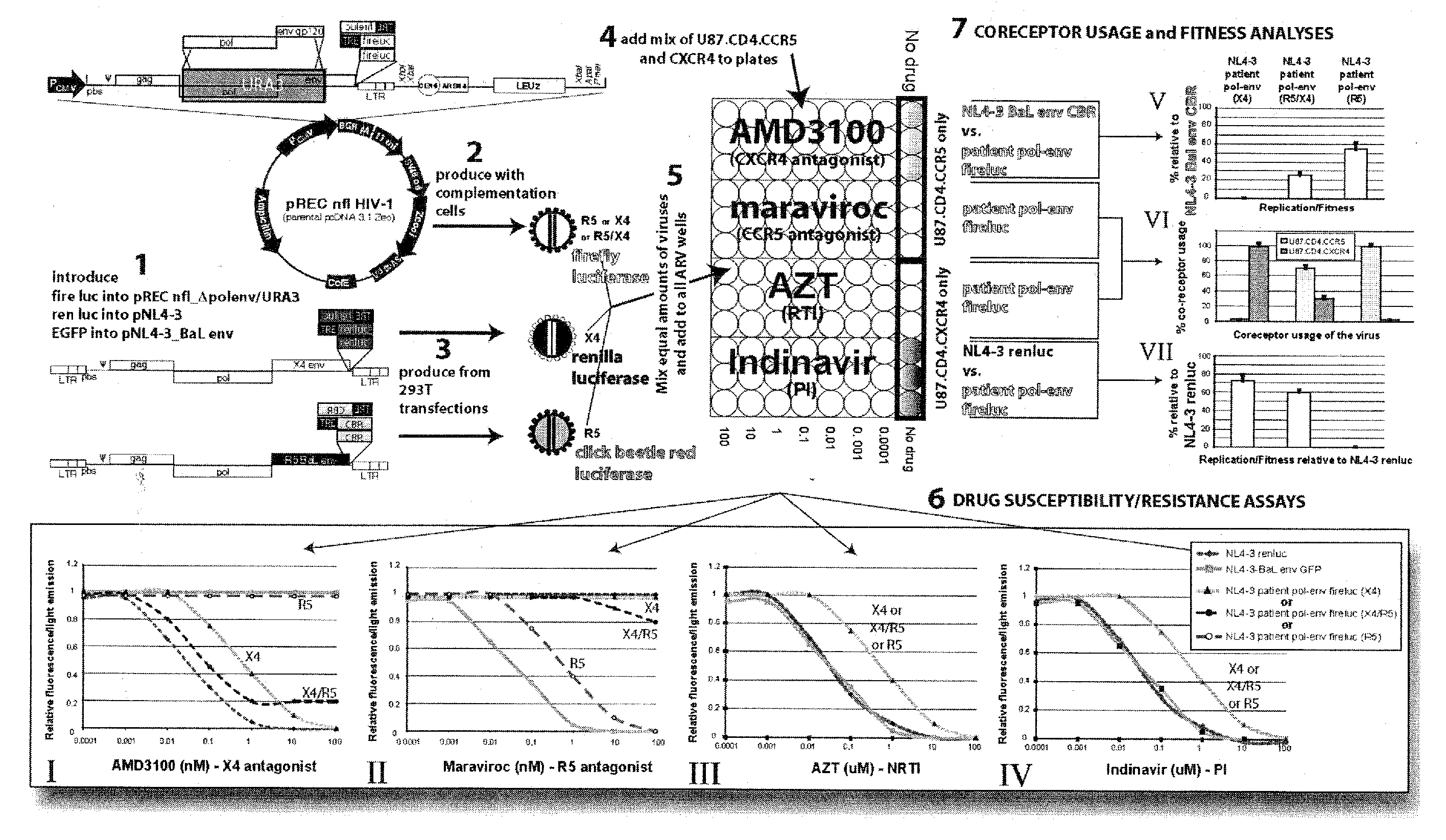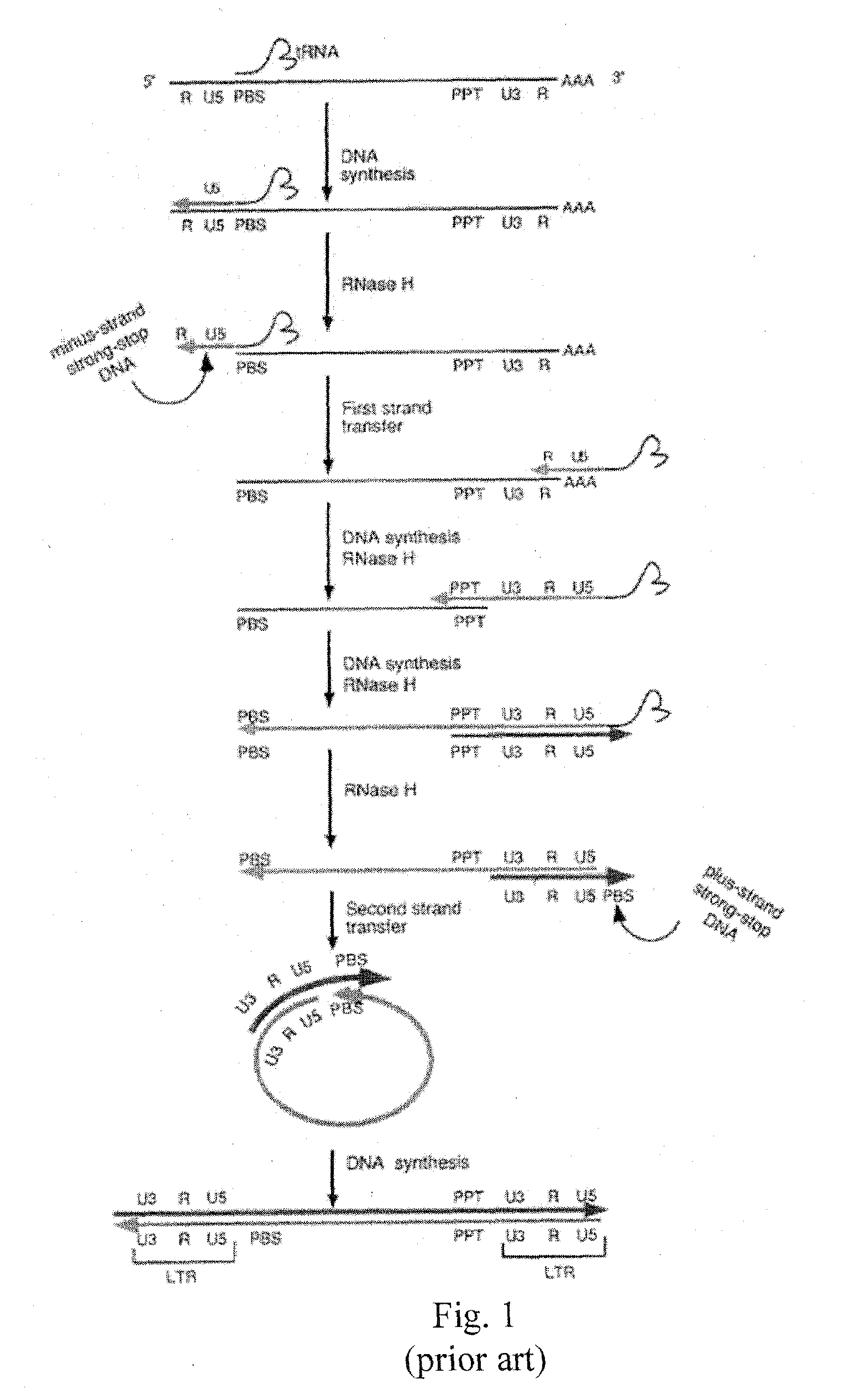Method for screening HIV drug sensitivity
a hiv drug and sensitivity technology, applied in the field of hiv drug sensitivity screening, can solve the problems of difficult application of standard molecular biological techniques for manipulating hiv-1 genetic elements, difficulty in insertion of new restriction sites for cloning, and difficulty in distributing unique restriction endonuclease sites conveniently across the hiv-1 genom
- Summary
- Abstract
- Description
- Claims
- Application Information
AI Technical Summary
Benefits of technology
Problems solved by technology
Method used
Image
Examples
Embodiment Construction
[0027]Utilizing the template switching behavior of reverse transcription in HIV provides a cloning and drug sensitivity screening technique. A vector containing a partial retrovirus genome, specifically, a vector containing a retrovirus genome devoid of one LTR is used. A suitable vector is shown in FIG. 2, which includes at least one origin of replication, a region of the DNA that is substantially identical to the primer binding site (pbs) of HIV, a selectable gene, a region of DNA that is substantially identical to the 3′ end of the long terminal repeat region of HIV. By “substantially identical” is meant that the regions have sufficient homology with the named segments of DNA as to be able to hybridize under stringent conditions.
[0028]The vector may be constructed by inserting a portion of an HIV strain genome into a suitable vector such as a plasmid. In the example shown in FIG. 2, a EcoRI (5747) to XhoI (8901) fragment of the HIV-1 genome is inserted into the plasmid pcDNA 3.1 ...
PUM
| Property | Measurement | Unit |
|---|---|---|
| time | aaaaa | aaaaa |
| nucleic acid | aaaaa | aaaaa |
| first fluorescent | aaaaa | aaaaa |
Abstract
Description
Claims
Application Information
 Login to View More
Login to View More - R&D
- Intellectual Property
- Life Sciences
- Materials
- Tech Scout
- Unparalleled Data Quality
- Higher Quality Content
- 60% Fewer Hallucinations
Browse by: Latest US Patents, China's latest patents, Technical Efficacy Thesaurus, Application Domain, Technology Topic, Popular Technical Reports.
© 2025 PatSnap. All rights reserved.Legal|Privacy policy|Modern Slavery Act Transparency Statement|Sitemap|About US| Contact US: help@patsnap.com



